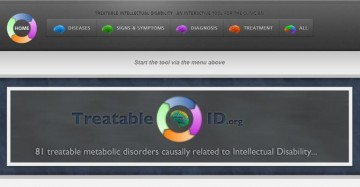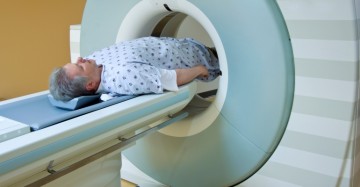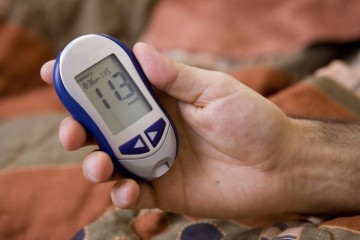By Dr. Steve Wong on December 16, 2015
As 2015 comes to a rapid close, I wanted to once again thank all of our authors and readers for their active participation at This Changed My Practice (TCMP).
By Sue Barlow, OT and Jennifer Loffree, OT on December 2, 2015
The statistics regarding recovery from concussion indicate that the majority of individuals will be symptom-free at 3 months; within 6 months 70-75% will be symptom free; and within a year 10% will have 1 persisting symptom and 5% will have 4 or more persisting symptoms
By Dr. Paul Thiessen on November 18, 2015
What changed my practice was this simple new technique reported in an article from Spain which described a new method to obtain a midstream urine collection in which the infant is held upright and someone rubs over the suprapubic region while gently tapping over the lumbar region of the spine.
By Dr. Antoinette van den Brekel on October 28, 2015
Health care providers caring for pregnant women and newborns are often faced with a finding of fetal hydronephrosis on routine screening antenatal ultrasound; in fact it is seen in 1 to 2% of fetuses screened. Babies at risk of rapidly progressive renal injury due to urinary tract obstruction need to be evaluated and referred for specialized care urgently, prior to discharge from hospital.
By Dr. Ric Arseneau on October 13, 2015
Fatigue, pain, and unexplained symptoms are commonly seen in physician offices, however they are often experienced as “unsatisfying” for doctors. Our patients need an explanatory model to help them understand their illness. If we don’t provide one, patients will create their own or seek one elsewhere.
By Dr. Karen Nordahl on September 30, 2015
It has been shown that 55% of pregnant patients reported some form of back pain during their pregnancy when questioned. Studies have demonstrated that if we get pregnant women moving, specifically working their pelvic floor with Kegel exercises and their ‘core’ they may have better pregnancy outcomes.
By James McCormack on September 16, 2015
Numerous observational studies have consistently shown in many (but not all) patient populations a correlation between people with higher blood pressure, glucose, and cholesterol numbers, and a greater risk of cardiovascular events such as heart attacks, strokes, and other unwanted outcomes.
By Dr. Catherine Allaire on September 2, 2015
Endometriosis is a very common condition affecting an estimated 10% of women of reproductive age. Severe dysmenorrhea is the most common symptom of endometriosis and the earliest one to occur.
By Dr. Anne Antrim on August 19, 2015
Read by QxMD provides the current research and opinions on topics in your field in a user-friendly manner so that I am not the last person in the province using Ribavarin for RSV infection when everyone else has read about the lack of efficacy.
By Douglas Cave, PhD on August 3, 2015
I was frustrated at times that the students and residents did not always follow the instructions I gave. Their work was sometimes incomplete, off topic, or plainly wrong. While this was not true for most students, it was consistently true for a few each year. Teaching about empathy for example, I would invite residents to practice doing an interview with each other using empathic reflections and they would do it incorrectly.
By Dr. Clara van Karnebeek and Dr. Sylvia Stockler on July 29, 2015
Affecting 2-3% of Canadians, intellectual disability (ID) is a lifelong, devastating condition defined by deficits in cognitive functioning (IQ<70) and adaptive skills. It is called global developmental disability (GDD) in children less than 5 years of age; it is defined as deficits in 2 or more developmental domains. In Canada, approximately 7,600-11,500 children are born annually with GDD. Identification of GDD or ID in children is the essential first step and often a task for the primary care practitioner.
By Dr. Randall White on July 8, 2015
Simple use of a self-rated symptom checklist can double the odds of response to antidepressant medication in primary-care patients.
By Dr. Sue Murphy on July 3, 2015
One of the topics examined in my initial “professionalism” course are the bylaws and Standards of Practice of the licensing body. Bearing in mind that the end goal is that students should be able to apply these standards to practice, not just memorise them, the multiple choice question (MCQ) exam format I have used contained a typical practice scenario with a variety of possible options for action, with instructions for the student to select the “best” option.
By Dr. Jane Buxton and Erica Tsang on June 24, 2015
Opioid overdose is a major cause of morbidity and mortality worldwide, and constitutes a serious public health issue. Throughout British Columbia (BC), the landscape of opioid overdose has evolved, first with oxycodone and more recently, illicit fentanyl.
By Dr. Kourosh Afshar on June 10, 2015
UDT is one of the common causes for referral to Pediatric Urologists. 1-2% of boys have UDT at age of 12 months. UDT is associated with increased risk of malignancy (relative risk 2.75-8).
By Dr. Mustafa Toma and Dr. Christopher Cheung on May 27, 2015
There are approximately 500,000 Canadians living with heart failure, and more than 10% in patients older than 65. Up to 50% of patients presenting with signs and symptoms of heart failure will have a preserved ejection fraction (HFpEF or diastolic dysfunction). However, there is a lack of evidence for effective therapies in the management of HFpEF.
By Dr. Hamidreza Abdi and Dr. Peter Black on May 13, 2015
The prostate is the only organ in the body that is routinely biopsied blindly without visualization of a specific suspected tumour. MRI before prostate biopsy may become routine practice, which should reduce the number of unnecessary biopsies.
By Andrea Warnick on April 29, 2015
Serious illness, dying, or death of a family member is one of the most significant life events a child will ever experience. I no longer wait for them to share their concerns and questions with me. I invite questions and address the grief.
By Dr. Susan Hollenberg on April 15, 2015
In December, 2013, Health Canada approved a 4- component Meningitis type B (4CMenB) vaccine. The vaccine approved in Canada utilizes technology based on ‘outer membrane vesicles. These are unique capsular identifiers that comprise fingerprints for a serogroup B strain. The challenge has been that over 8000 MenB strains exist!
By Dr. Deborah Altow on April 1, 2015
Dr. Deborah Altow (biography and disclosures) What I did before Like many teachers, I was seduced by the imperative to make sure my students gained the benefit of my experience, and thus I talked too much. I had always told my students that the two 4-letter words they needed most were KIND and WAIT. One […]
By Drs. Kam Shojania and Neda Amiri on March 31, 2015
Gout is one of the most common forms of arthritis, affecting 1.4% of the population. Primary care physicians diagnose and manage most patients with gout. While the gold standard for diagnosing gout is visualization of monosodium urate crystals (MSU) in joint fluid under polarization microscopy, this is not always the case.
By Dr. Daniel Dodek on March 18, 2015
Mental health problems including anxiety, depression and stress make up a large proportion of a typical day in primary care medicine. They also contribute a huge comorbid burden in specialty care. These conditions all require an intense amount of time to help and manage patients.
By Dr. Amin Kanani on March 2, 2015
Patients are often referred to determine if they have a food allergy. The prevalence of food allergy in Canada is 6.7%, however more than 20% on the population modifies their diet because of perceived food allergy. Approximately 85% of all food allergies are to peanut, tree nut, cow’s milk, egg, wheat, soy, sesame and seafood.
By Dr. Breay Paty on February 18, 2015
Nausea can be a common side effect of GLP-1 receptor agonist, which can sometimes be dose limiting. However, this usually improves with time. As a new class of agents, evidence for the long-term safety of incretins is still emerging. Most of the safety questions involve cardiovascular (CV) risk, as well as pancreatitis and pancreatic cancer.
By Dr. Suren Sanmugasunderam on February 3, 2015
There are 2 major forms of Age-Related Macular Degeneration (ARMD). The dry form is characterized by drusen, pigmentary mottling and retinal and retinal pigment epithelial atrophy. The wet form is characterized by choroidal neovascular membranes (CNVM).
By Dr. Richard Kendall on January 20, 2015
Arthroscopy is often thought of as an effective, low morbidity procedure for the treatment of arthritis, symptomatic meniscus tears, or possible intra-articular loose bodies. The question is however, “Is arthroscopy effective in the treatment of arthritis or degenerative meniscus tears?”
By Dr. Alexander Chapman on January 6, 2015
Often, self-injury is managed and treated in the context of therapy work with a psychologist or psychiatrist. Family physicians, however, are in an excellent position to be first responders, to offer helpful suggestions, and to help refer the patient to appropriate care.



























Recent Comments